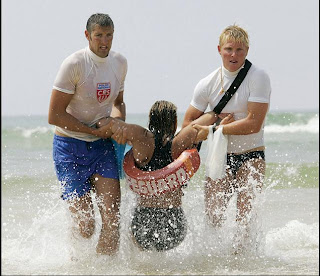The Air India crew has decided that enough is enough: it’s time to move with the times and smartly! As a starter, the emphasis will be on being well turned out. Fashion guru Pierre Cardin and reigning desi diva Ritu Beri have been roped in for the makeover. While Ritu Beri will create new uniforms for the female cabin crew – Cardin will take care of the male dressing. High time Air India became more fashionable – particularly now that Jet and Kingfisher have been giving everyone a complex!
crew has decided that enough is enough: it’s time to move with the times and smartly! As a starter, the emphasis will be on being well turned out. Fashion guru Pierre Cardin and reigning desi diva Ritu Beri have been roped in for the makeover. While Ritu Beri will create new uniforms for the female cabin crew – Cardin will take care of the male dressing. High time Air India became more fashionable – particularly now that Jet and Kingfisher have been giving everyone a complex!
For Complete IIPM Article, Click here
Source: IIPM Editorial, 2008
An IIPM and Management Guru Prof. Arindam Chaudhuri's Initiative
 crew has decided that enough is enough: it’s time to move with the times and smartly! As a starter, the emphasis will be on being well turned out. Fashion guru Pierre Cardin and reigning desi diva Ritu Beri have been roped in for the makeover. While Ritu Beri will create new uniforms for the female cabin crew – Cardin will take care of the male dressing. High time Air India became more fashionable – particularly now that Jet and Kingfisher have been giving everyone a complex!
crew has decided that enough is enough: it’s time to move with the times and smartly! As a starter, the emphasis will be on being well turned out. Fashion guru Pierre Cardin and reigning desi diva Ritu Beri have been roped in for the makeover. While Ritu Beri will create new uniforms for the female cabin crew – Cardin will take care of the male dressing. High time Air India became more fashionable – particularly now that Jet and Kingfisher have been giving everyone a complex!For Complete IIPM Article, Click here
Source: IIPM Editorial, 2008
An IIPM and Management Guru Prof. Arindam Chaudhuri's Initiative
IIPM Arindam Chaudhuri 4Ps Business & Marketing Business & Economy Kkoooljobs Planman Media Planman Consulting Planman Marcom Planman Technologies Planman Financial Planman Motion Pictures GIDF The Daily Indian IIPM Think Tank
The Sunday Indian
